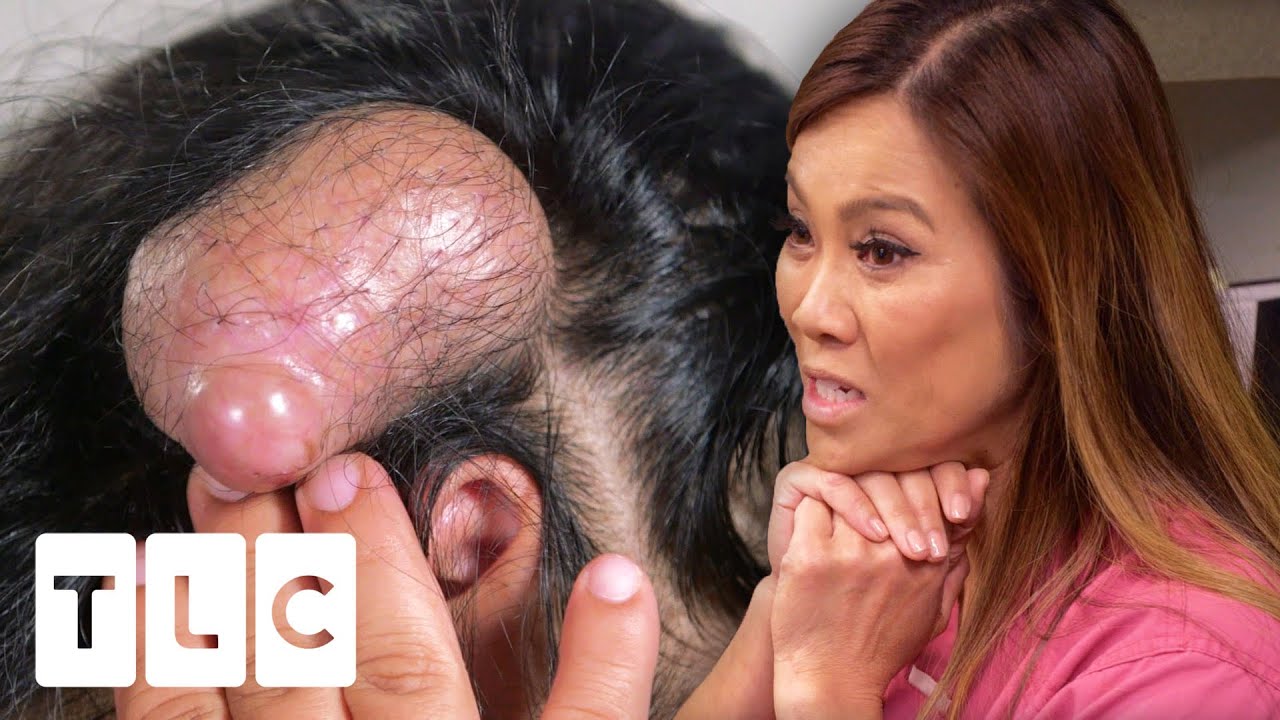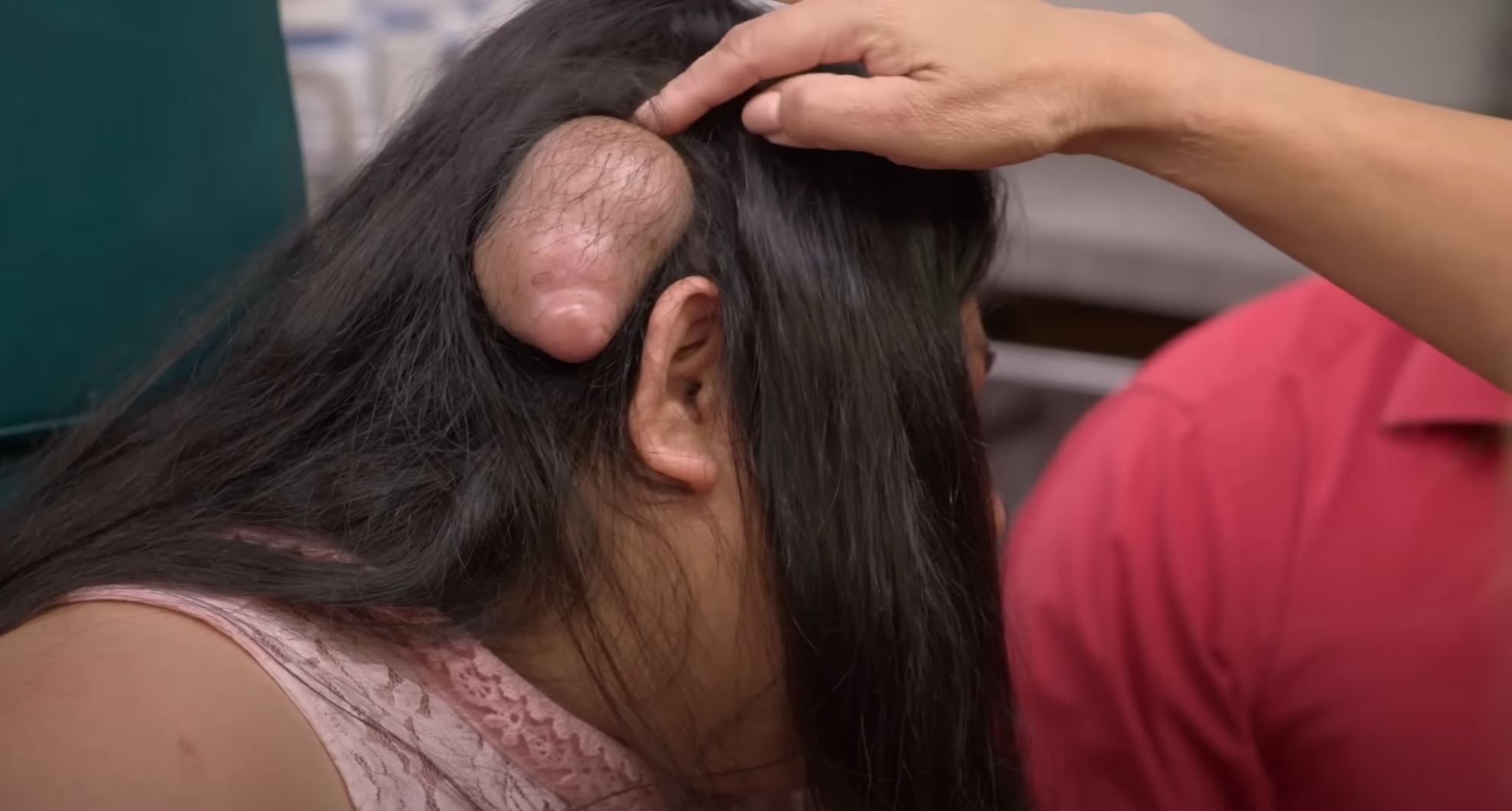Dr. Sandra Lee, also known as Dr. Pimple Popper, has removed several large pilar cysts from patients on her YouTube channel, including one that she described as one of the biggest sac removals she’s ever seen:
- Big Bertha: In a video titled “Woman Gets Her 35 Year Old Pilar Cyst Removed”, Dr. Lee removes a cyst that the patient named “Big Bertha” after 35 years.
- Gnocchi: In another video, Dr. Lee removes a large pilar cyst from a patient’s scalp and describes it as one of the biggest sac removals she’s ever seen.
- Dr Lee May Have Extracted The Biggest Pillar Cyst She Has Ever Seen!: This video is available on YouTube.
Pilar cysts are benign, slow-growing lumps that can appear on the scalp and grow to be quite large. They can be removed by a doctor with an outpatient surgery that involves cutting open the cyst, draining the fluid, and removing the cyst wall. Hair will usually grow back after the surgery, though some hair roots may be lost.

What to know about pilar cysts
Pilar cysts grow around hair follicles and usually appear on the scalp. They are small yellow, white, or discolored bumps that may be round or dome-shaped. They grow slowly and may disappear on their own, or a doctor can remove them.
A cyst is a small fluid-filled lump that forms under the skin. Cysts are very common. They usually have no symptoms or side effects.
There are several names for a pilar cyst: a wen, trichilemmal cyst, and isthmus-catagen cyst.
There are three main types of cysts: epidermoid, meibomian (chalazion), and pilar cysts. Pilar cysts occur in less than 10%Trusted Source of the population.
Many pilar cysts heal without treatment if a person is careful not to damage the skin.
A surgeon is usually able to remove a cyst easily. However, sometimes, the cyst may reappear after removal.

How do you identify a pilar cyst?
A doctor can identify pilar cysts by their location. They develop around hair follicles. A follicle is a collection of cells forming a tube or sheath around a single hair.
Because most of the body’s hair is on the head, 90% of pilar cysts grow on the scalp. No hair usually grows on the lump formed by the cyst, which may make it easier to see.
This type of cyst also has no dark point in its center. The skin covering a pilar cyst is less fragile than an epidermoid cyst.
A doctor can also recognize a pilar cyst under a microscope. An epidermoid cyst has skin cells covering it. A pilar cyst has keratin, the protein found in skin and hair cells.
A person is likely to develop more than one pilar cyst at a time.
What do pilar cysts feel like?
A pilar cyst is firm to the touch. Because cysts contain fluid, they may move slightly when pressed. Pressing a cyst too hard can cause pain or soreness.
Cysts may be tender if there is an infection.
The skin covering a pilar cyst is thick, making it less likely to break or pop. However, brushes or combs can catch cysts on the scalp, breaking the skin and allowing pus to leak from the cyst.
Keratin helps keep skin and hair strong and flexible. When keratin cells die, they usually move to the skin’s surface and either drop off or wash away.
If these cells move deeper into the skin, they can multiply and form a pilar cyst. The keratin in a cyst resembles a thick white or yellow paste.
Pilar cysts can run in families. If a parent has one, there is a 1 in 2 chance a child will develop a pilar cyst too.
Pilar cysts are also more common in females than in males. They can affect people of all ethnic and racial groups. They usually occur in middle-aged adults.
There are no apparent risk factors for pilar cysts. However, a person with damaged hair follicles or injured skin may be more likely to develop them.
Complications from a pilar cyst are rare. They can include:
- Infection: If bacteria get into the cyst, it can become infected. The infection can progress beyond the initial cyst into the tissue and bone if not treated.
- Tumor: Very rarely, a pilar cyst can develop into a tumor called a proliferating trichilemmal cyst. This only happens in about 3%Trusted Source of pilar cyst cases. The cyst cells multiply, and the lump grows and may ulcerate. These tumors grow slowly and are not usually cancerous.
- Recurrence: After removal, a scar will form. However, the cyst may grow back.
A doctor or dermatologist can check any lumps or bumps on the skin. Cysts are usually not a cause for concern. However, getting the right diagnosis is essential.
A doctor or dermatologist will carefully examine the cyst. They may ask about medical history and additional symptoms.
A doctor may use a CT scan or MRI to determine whether the cyst has reached the deeper soft tissue or bone.
If a doctor cannot visually diagnose a cyst, they may remove it and examine it under a microscope to ensure it is not harmful.
Cysts often heal on their own. Holding a clean, warm washcloth to a cyst can reduce swelling and help it heal.
Doctors usuallyTrusted Source prescribe antibiotics to treat an infected pilar cyst.
It is not always necessary to remove a cyst. If the cyst is not causing symptoms, a person may decide not to seek treatment.
Removal
Since pilar cysts usually form on the scalp, catching one when dressing or brushing the hair can be painful. If a cyst is causing discomfort, a person can have it removed.
Before cyst removal, a person receives a local anesthetic to reduce pain. There are two methods of removal:
- making a small cut in the skin to drain the cyst of fluid
- removing the entire cyst without cutting into it
The procedure is usually quick and does not require an overnight stay in a hospital or clinic.
Doctors apply a dressing after removing the cyst. It is generally recommended to avoid getting the dressing wet and take care when touching the affected area.
Here are some frequently asked questions about pilar cysts.
Can you pop a pilar cyst?
A person should avoid scratching, popping, or picking at a cyst. Doing so can cause the area to become infected.
Always wash your hands before touching the area. If you want your cyst removed, have a doctor perform the procedure.
What is inside a pilar cyst?
Keratin is inside a pilar cyst. The keratin resembles a thick white or yellow paste.
Can pilar cysts cause cancer?
In extremely rare casesTrusted Source, a proliferating trichilemmal cyst can become cancerous. If this type of cyst develops, a person may wish to have the cyst evaluated.
How do you prevent a pilar cyst?
A pilar cyst is less likely to grow back if a doctor removes it entirely rather than draining it. However, a person cannot fully prevent a pilar cyst from coming back after surgery.
Pilar cysts usually form around the hair follicles on the scalp. They are not contagious and are usually harmless. When infected, they can cause pain or discomfort. A doctor can prescribe medication for this.
In rare cases, a pilar cyst may develop into a tumor. However, it is usually not cancerous.
A person may have more than one pilar cyst at a time, and they may disappear and return. In most cases, a cyst causes no symptoms and heals without treatment.
If necessary, a doctor can remove a cyst with a simple procedure. The cyst may reappear in the same location, and new cysts may develop.



